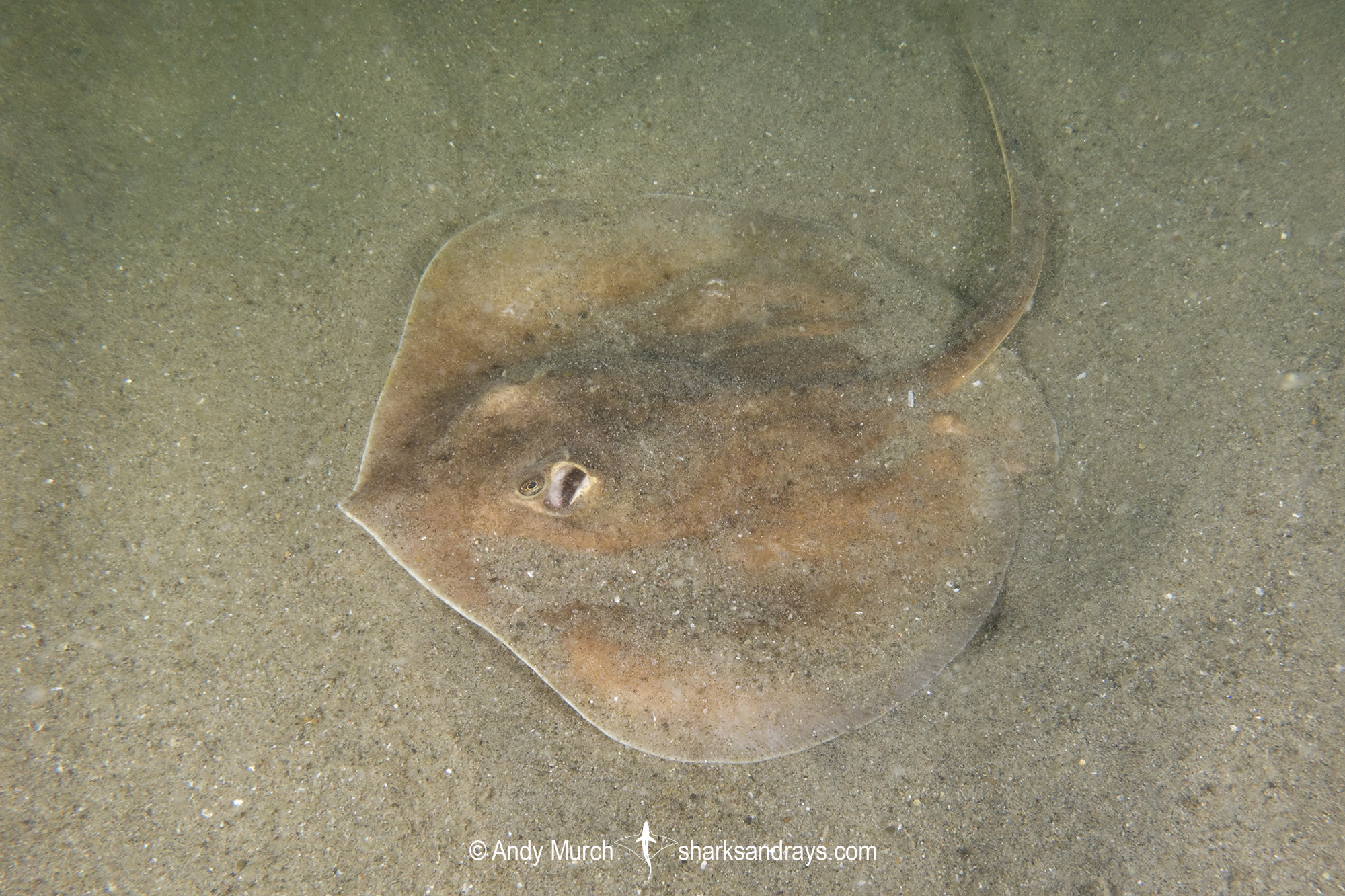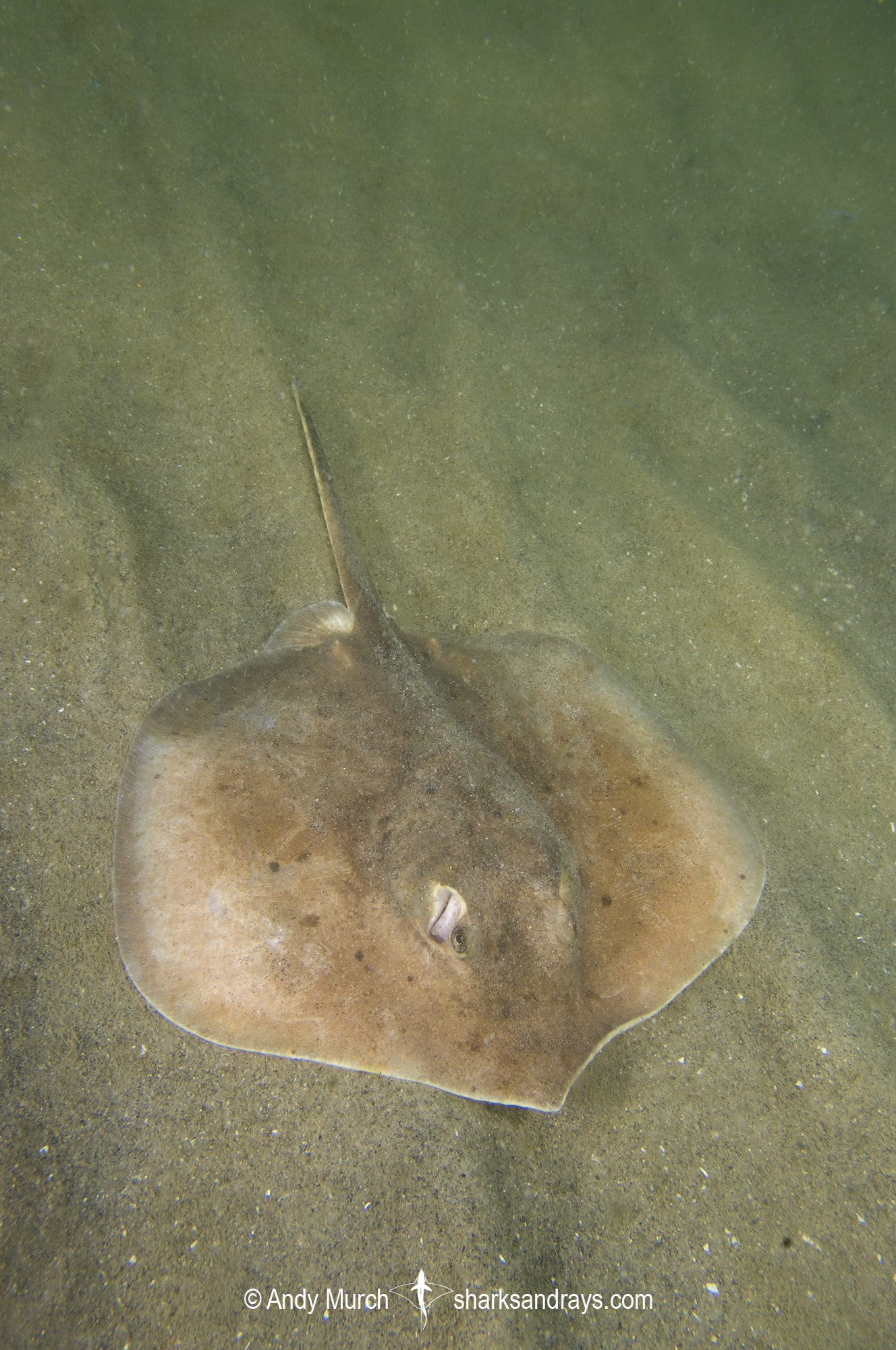Common name(s)
Rogers’ Round Ray, Thorny Stingray, Thorny Round Ray.
Identification
A medium-sized round stingray with a sub-oval disc that is significantly wider than long; width 1.1-1.3 x length. Snout acutely angular. Anterior margins of disc mildly concave, apices broadly rounded. Disc mostly smooth except for a row of low thorns on centre line from nape to tail sting, and some small embedded denticles around thorns. Pelvic fins broadly triangular with weakly rounded posterior margins, width slightly exceeding length.
Eyes small; orbit length 0.21-0.23 x snout length. Mouth weakly arched. Nasal curtain skirt-shaped. Nostrils small.
Tail long and slender-based. Lateral skin folds absent. Tail length 52-55% of total length. Caudal sting robust, origin at mid-tail. Caudal fin long with a rounded posterior margin.
Colour
Dorsum beige to mid-brown or pinkish brown, with scattered irregular dark spots that are usually smaller than eye size. Pectoral fins pinker or paler towards apices. Midline of disc and tail often dusky. Ventrum whitish, somewhat dusky posteriorly.
Size
Total length 46cm. Length at birth unknown.
Habitat
Tropical/subtropical seas. Found on sandy or muddy substrates from very shallow bays to at least 30m.
Distribution
Eastern Pacific. Found from the northern Sea of Cortez to Ecuador.
Conservation Status
NEAR THREATENED
Rogers’ Round Ray is taken as bycatch of large-scale and small-scale shrimp trawl fisheries across its range. It is the most abundant round ray in small-scale shrimp trawling in Colombia and is also abundant in the bycatch of the Costa Rican industrial shrimp trawl fishery. It is generally discarded although round rays may be used as bait or fishmeal by artisanal fishers. Tropical Eastern Pacific round rays have life history parameters including very early age-at-maturity (1 year for Rogers’ Round Ray) that demonstrate high biological productivity and therefore resilience to fishing mortality. Rogers’ Round Ray is subjected to intense and largely unmanaged fishing pressure throughout most of its range, with little refuge. However, its continued abundance despite high overlap with fisheries suggests that the population may not have declined as much as that suspected for some other tropical Eastern Pacific round rays. Overall, due to levels of exploitation from its exposure to inadequately managed fisheries throughout its range, balanced with high biological productivity, it is suspected that Rogers’ Round Ray has undergone a population reduction of 20–29% over the last three generations (15 years), and it is assessed as Near Threatened (close to meeting Vulnerable A2d).
Citation
Kyne, P.M., Charvet, P., Areano, E.M., Cevallos, A., Espinoza, M., González, A., Herman, K., Mejía-Falla, P.A., Morales-Saldaña, J.M. & Navia, A.F. 2020. Urotrygon rogersi. The IUCN Red List of Threatened Species 2020: e.T161335A124467453. https://dx.doi.org/10.2305/IUCN.UK.2020-3.RLTS.T161335A124467453.en. Downloaded on 04 April 2021.
Reproduction
Aplacental viviparous. 1-3 pups per litter. Gestation period 4-5 months. Females mature after one year. Triannual reproductive cycle
Diet
Diet consists mostly of prawns and polychaete worms.
Behavior
Congregates seasonally in shallow bays. Camouflages itself under sand when resting.
Reaction to divers
Difficult to approach closely. Usually bolts once discovered. Often found partially buried under sand. Moves away and reburies quickly when sand is wafted away.
Diving logistics
Probably fairly common along the Pacific coast of Central America but rarely encountered around reefs. I came across this species while snorkelling in shallow turbid water on the protected east side of Punta Chamé in Panama. In March at this location I encountered about a dozen Rogers’ round rays about 10m from the beach in 1-1.5m depth. The visibility in the cut was so poor that they would not have been visible if they were any deeper.
What’s new
View our full list of updates
Similar species
Chilean Round Ray Quite similar but distinguishable by larger dark spots that are approximately eye-sized. And inconsistent row of thorns along midline.







